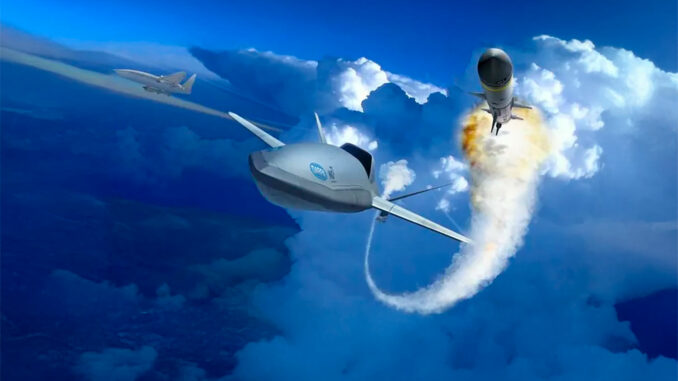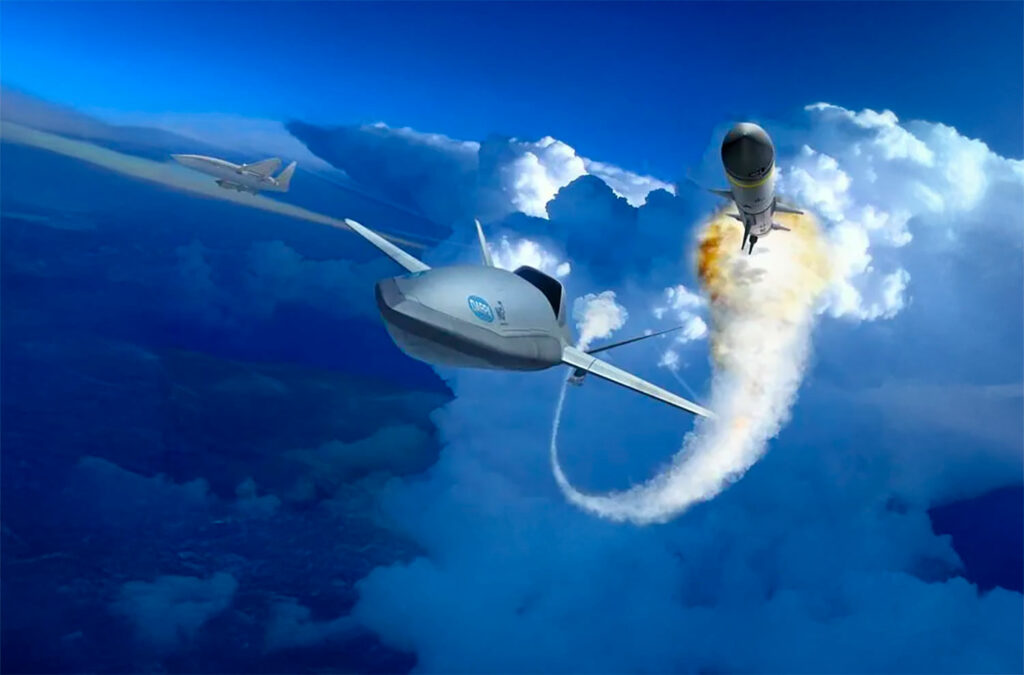
DARPA’s LongShot, a stealth drone capable of air-to-air firing, marks a crucial milestone in modern air strategies and global technological competition.
The LongShot, developed by DARPA in partnership with General Atomics, is a stealth drone designed to deliver air-to-air fire while operating from manned aircraft. This breakthrough revolutionizes aerial combat, expanding the defense and attack capabilities of armed forces. While China is also developing armed stealth drones such as the GJ-11, American efforts are aimed at preserving their technological superiority.
The LongShot concept and objectives
The LongShot is designed to be launched from manned fighter aircraft, such as the F-35 or F-15, and carry out protection and remote attack missions. The idea behind this drone is to create teams of drones that surround and protect fighter jets while increasing their attack range. The LongShot could also be used to saturate enemy airspace, neutralize air defense systems and provide advanced reconnaissance. This type of deployment fits in with current Pentagon strategies, including the “Replicator” initiative to acquire coordinated UAV fleets.
From a technological standpoint, the LongShot is based on a stealthy platform, with precise attack capabilities and considerable operational autonomy. The use of such a drone reduces the risks for human pilots by pushing back the front line.
A technological step forward: development and testing
Development of the LongShot involved collaboration between DARPA, General Atomics, Lockheed Martin and Northrop Grumman. However, General Atomics was chosen for the flight tests, a choice that demonstrates the Pentagon’s determination to pursue a viable project. The first flight tests of this drone mark a significant step forward. The aim is to validate its ability to operate autonomously, while guaranteeing the accuracy of air-to-air firing.
The evolution of this type of technology could also be a means of responding to emerging threats, notably the military developments of countries like China, which is working on drones such as the GJ-11. The latter is an armed stealth drone which, while innovative, seems less advanced in terms of operational capabilities than the LongShot.

Antecedents and similar projects: the case of the UCLASS
The LongShot follows on from other innovative projects, such as the U.S. Navy’s UCLASS program. This project initially aimed to develop a stealth drone capable of taking off from an aircraft carrier to carry out reconnaissance and attack missions. Although the UCLASS program eventually evolved into the MQ-25 Stingray refueling drone, it laid the foundations for many innovations in autonomous take-off and landing on ships.
Experience gained with the X-47B, a technological forerunner, showed that the development of an armed drone capable of autonomous missions was technically feasible. Although the complexity of the project led to adjustments, the success of the X-47B proved the feasibility of such devices.
Strategic consequences and global competition
The introduction of drones like the LongShot could change the balance of air power. These drones could multiply attack strategies by offering increased coverage and firepower without compromising pilot safety. In a context where countries such as China and Russia are investing heavily in similar technologies, the LongShot could give US forces a significant advantage.
The use of advanced combat UAVs is also in line with an evolution in military doctrines that foresees combined operations between autonomous UAVs and manned aircraft. This approach reduces risk and improves response in the event of air confrontation.
DARPA’s LongShot marks a crucial step in the evolution of airborne strategies. By combining stealth, offensive capabilities and autonomy, this drone could redefine the way armed forces think about aerial combat. Global technological competition is intensifying, and projects such as the LongShot show that American military innovation remains at the cutting edge.
War Wings Daily is an independant magazine.